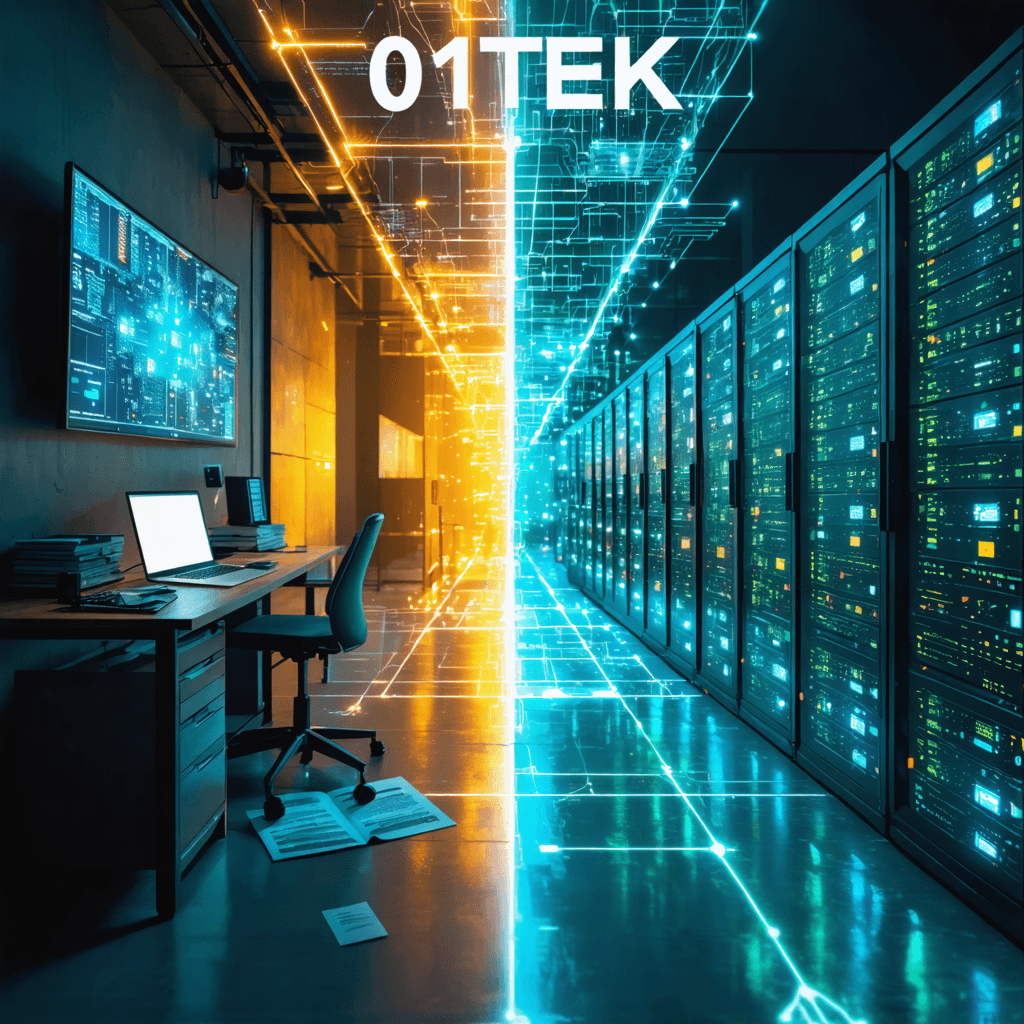From Dorm Room to Data Center: Building AI Systems That Grow With Your Student Projects
In today's rapidly evolving tech landscape, the journey from building simple student projects to developing enterprise-level AI systems is more accessible than ever. What starts as a modest machine learning experiment in your dorm room could potentially transform into a robust solution powering data centers worldwide. Let's explore how you can architect AI systems that scale from academic projects to production-ready applications.
Starting Small: The Foundation
Every significant AI system begins with a simple proof of concept. Your dorm room experiments, whether they're basic neural networks or simple natural language processing models, serve as the perfect testing ground for bigger ideas. Here's how to lay the groundwork:
1. Choose Scalable Technologies
When selecting tools and frameworks for your student projects, think long-term. Popular choices include:
- PyTorch or TensorFlow: These frameworks offer both simplicity for beginners and advanced features for production deployment
- Docker: Containerization from day one makes future scaling easier
- Git: Version control is crucial for both solo projects and team collaboration
2. Design with Data in Mind
Even if you're starting with a small dataset, architect your system to handle growth:
- Implement proper data pipelines from the beginning
- Use efficient data storage and retrieval methods
- Plan for data versioning and tracking
Scaling Up: From Local to Cloud
As your project grows, you'll need to transition from local development to cloud infrastructure. This phase requires careful consideration of several factors:
1. Infrastructure Considerations
Cloud platforms offer various services tailored to AI workloads:
- Compute Resources: GPU instances for training
- Storage Solutions: Distributed storage systems
- API Management: RESTful services for model deployment
2. Model Management
Implement robust model management practices early:
- Version control for models
- Experiment tracking
- Performance monitoring
- Automated testing pipelines
Enterprise-Ready Architecture
Moving to production requires additional components that ensure reliability, scalability, and maintainability:
1. Microservices Architecture
Break down your system into manageable components:
- Model training service
- Inference API
- Data preprocessing pipeline
- Monitoring and logging service
2. Security and Compliance
Enterprise systems require robust security measures:
- Data encryption at rest and in transit
- Access control and authentication
- Audit logging
- Compliance with relevant regulations (GDPR, HIPAA, etc.)
Best Practices for Scaling AI Systems
1. Modularity
Keep your code modular from the start:
# Example of modular design
class ModelTrainer:
def __init__(self, config):
self.config = config
def train(self, data):
# Training logic
pass
def evaluate(self, test_data):
# Evaluation logic
pass
2. Documentation
Maintain comprehensive documentation:
- API specifications
- System architecture diagrams
- Deployment procedures
- Troubleshooting guides
3. Monitoring and Maintenance
Implement robust monitoring solutions:
- Model performance metrics
- System health indicators
- Resource utilization
- Error tracking and alerting
Common Challenges and Solutions
1. Resource Management
Challenge: Limited computational resources in development environments.
Solution:
- Use efficient data sampling techniques
- Implement gradient accumulation
- Leverage distributed training when necessary
2. Data Pipeline Scaling
Challenge: Managing growing datasets efficiently.
Solution:
- Implement data streaming
- Use distributed storage systems
- Optimize data preprocessing
3. Model Deployment
Challenge: Ensuring consistent model performance in production.
Solution:
- Implement A/B testing
- Use canary deployments
- Monitor model drift
Future-Proofing Your AI System
1. Extensibility
Design your system to accommodate future enhancements:
- Plugin architecture for new features
- Standardized interfaces
- Configurable components
2. Performance Optimization
Plan for ongoing optimization:
- Model compression techniques
- Inference optimization
- Resource utilization improvements
Real-World Success Stories
Many successful AI companies started as student projects. Take inspiration from:
- OpenAI's initial experiments
- Google Brain's early projects
- DeepMind's university research origins
Technical Considerations for Growth
1. Infrastructure Scaling
# Example Kubernetes configuration
apiVersion: apps/v1
kind: Deployment
metadata:
name: ai-model-service
spec:
replicas: 3
selector:
matchLabels:
app: ai-model
2. API Design
RESTful API example:
from fastapi import FastAPI
app = FastAPI()
@app.post("/predict")
async def predict(data: InputData):
result = model.predict(data)
return {"prediction": result}
Building a Community
As your project grows, consider:
- Open-sourcing components
- Writing technical blogs
- Participating in academic conferences
- Collaborating with other researchers
Measuring Success
Track key metrics throughout your system's growth:
- Model performance metrics
- System reliability statistics
- User adoption rates
- Resource utilization efficiency
Future Trends
Stay ahead by considering emerging trends:
- Edge AI deployment
- AutoML integration
- Hybrid cloud solutions
- Federated learning
Ready to take your AI project to the next level? 01TEK offers comprehensive courses and resources to help you scale your projects from concept to enterprise deployment. Our expert instructors and cutting-edge curriculum will guide you through every stage of your AI development journey.
Join our community of innovators and transform your dorm room project into the next breakthrough AI system. Visit 01TEK today to explore our courses and start your scaling journey.
Looking to enhance your AI development skills? Explore our comprehensive course catalog or join our thriving developer community to connect with fellow innovators and industry experts.
[Note: Replace the placeholder links with actual 01TEK course and community links]
Nine out of ten businesses fail; so I came up with a foolproof plan
create ten businesses.”



